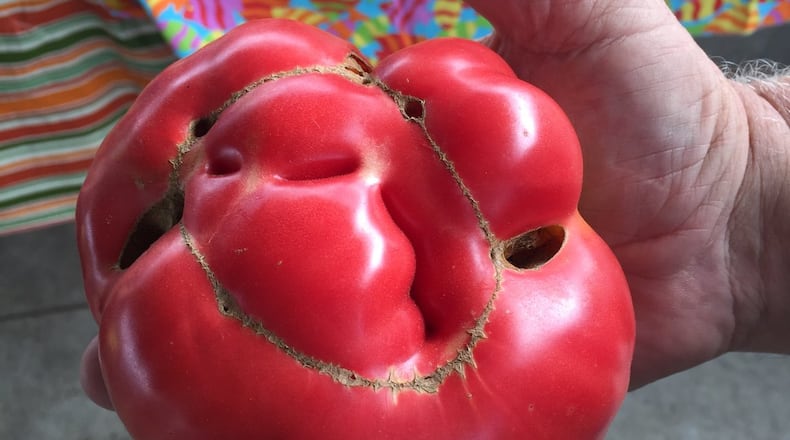Q: I save heirloom tomato seeds. Some of the fruit is very lumpy this year. Any ideas why? Julia Howard, Spalding County
A: Lumpy, distorted, oddly shaped tomatoes are generally referred to as "catfaced." Oddly, it has nothing to do with cats. The deformity is typically caused by temperature conditions when the bloom is being pollinated. High temperatures as well as low temperatures can cause it. Big-fruited varieties are more prone to the condition than medium-fruited varieties. HINT: Don't set out your plants too early in spring. Catfacing is nothing to worry about. You won't win any prizes at the county fair but the tomato will taste fine.
Q: What are some hardy window box plants for a balcony that I don't have to water daily? It's going to get a lot of sun. What would you recommend for box dimensions and flowers? Tina Kalvelage, email
A: I think rosemary, Mexican heather, and dwarf ornamental grass, like 'Little Bunny' fountain grass, could withstand the rigors you propose. Calculate one-half cubic foot of soil for each plant you decide on. A window box 12 inches wide, 12 inches deep and 36 inches long could hold six plants.
Q: What would be a good soil-improving cover crop? How do I plant it? Randy Richter, Butts County
A: Cover crops prevent erosion and enrich the soil when you have nothing growing in your vegetable garden. Cool-season cover crops can be planted from early September into the first part of October. Use a combination of a cereal grain with some type of legume. Typically, wheat, oats or rye is planted with clover or winter peas.
NOTE: Do not use annual or perennial ryegrass, commonly used in lawns. It is hard to eliminate once you’ve introduced it.
A typical mix might be three to four pounds of a cereal grain with 0.25 pounds of legume seed per 1,000 square feet. Summer cover crops include buckwheat, millet, cowpeas, sorghum-sudangrass or soybeans. Depending on your selection, plant at a rate of one to five pounds of seed per 1,000 square feet. More details at bit.ly/GAcovercrop.
Q: One of the eight azaleas I planted two years ago has had to be replaced twice. Why might I be having trouble with this one bush? Valerie Baldowski, email
A: Whenever plants die in one spot, I immediately suspect the soil is too soggy. Dig up the problematic azalea after a rain and check the soil. It should not be soggy a day after rainfall. Another idea for when you plant another azalea this fall: Try to wash as much of the planting media off of the roots as you possibly can. Untangle and spread the roots out flat so they extend horizontally under the shrub.
About the Author
The Latest
Featured

